BEAST IN THE BUNKER
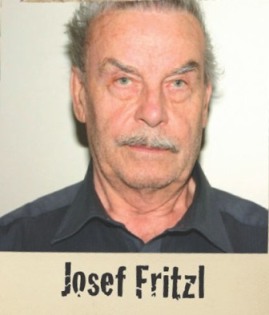
Name: Josef Fritzl
DOB: 9 April1935
Profession: Technical equipment salesman and landlord
Upbringing: Claimed his mother hit him until he was covered in blood
Previous conviction: Sentenced to 18 months in jail for rape
Charges: False imprisonment, rape, incest, coercion, enslavement and negligent homicide
Josef Fritzl told conflicting stories about his mother Maria. In some, she was ‘the best woman in the world’, in others she had been a cold, brutal being – almost inhuman. ‘She used to beat me, hit me until I was lying in a pool of blood on the floor,’ he once claimed. ‘I never had a kiss from her.’
Later on, Fritzl claimed, his mother did not mellow with age. Instead, her harsh nature stayed with her, even into old age. When Fritzl was a senior citizen himself, he revealed that Maria’s last years were spent in a locked room with a bricked-up window. Fritzl told concerned neighbours that his mother had died, when in reality she had been his captive. In ordinary circumstances, Fritzl’s behaviour towards his mother would be shocking, but in the context of his other crimes the incident ranks as little more than a footnote.
Deathly pale
The world knew nothing of Fritzl’s crimes until the morning of Saturday 19 April 2008, when he telephoned for an ambulance. Seventeen-year-old Kerstin Fritzl was seriously ill at his home, number 40 Ybbsstrasse in the Austrian town of Amstetten.
The ambulance attendants were puzzled by the condition of their unconscious patient. Her symptoms were like nothing they had ever encountered. Deathly pale and missing many of her teeth, Kerstin was close to death. She was transported immediately to the local hospital. A few hours later, Josef Fritzl turned up. Describing himself as her grandfather, he presented a letter from Kerstin’s mother, Elisabeth.
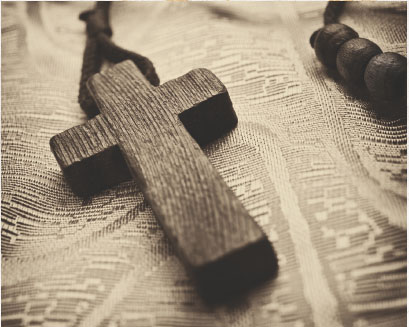
Fritzl explained Elisabeth’s disappearance by saying she had joined a cult
Please help her. Kerstin is very scared of strangers. She has never been in a hospital before. I’ve asked my father for help because he is the only person she knows.
Josef Fritzl explained Elisabeth had run off to join a religious cult many years before, leaving the child with him. The police were called in as Kerstin lay close to death and a team of investigators began a search for Elisabeth Fritzl. The authorities wanted to question the mother about what they thought might be criminal neglect. Enquiries were made all over Austria and all sorts of databases were checked, yet nothing could be found on Elisabeth that was not at least a few decades old.
Televised appeal
At the end of Kerstin’s second day in hospital, the doctors made a televised appeal. They were struggling to diagnose Kerstin’s condition and they thought that her mother might be able to help them. When Elisabeth failed to contact the hospital the police showed up at 40 Ybbsstrasse. They wanted to take DNA samples from the Fritzls. Josef’s wife Rosemarie provided a sample, as did the other children that Elisabeth had previously abandoned. However, Josef himself was far too busy to give the authorities even a few minutes of his time.
One week after Kerstin had been taken to hospital, Rosemarie was surprised to see Elisabeth in her house. Her daughter had been away for nearly 24 years. Elisabeth was accompanied by two children, Stefan and Felix. Rosemarie had not been aware of their existence. Josef explained that their daughter had heard the doctors’ appeals and had left the cult she had been with, so that she could see her seriously ill daughter.
When Elisabeth visited the hospital, the police were waiting. They wanted to know where the young woman had been during the previous two decades, and how it was that she had abandoned her children. Elisabeth was taken to the police station, where she was questioned for hours. As midnight approached, Elisabeth revealed that she had not joined a cult and she had not abandoned her children. Instead, she had been imprisoned by her father in the cellar at 40 Ybbsstrasse.
Having broken her silence, Elisabeth told the police that she would reveal everything about the last 24 years of her life on condition that she never had to see her father again.
After the stunned investigators had acceded to her wishes, Elisabeth began a two-hour monologue in which she described in considerable detail the ordeal she had endured.
She told the police that her father had lured her into the cellar on 29 August 1984, where she had been sedated with ether and placed in a hidden bunker.
It seemed that the foundations of number 40 Ybbsstrasse were something of a maze. The oldest part of the house dated back to 1890 and numerous modifications had been made in the years that followed, including a 1978 addition that had been constructed by a builder.
For reasons of secrecy, however, Fritzl had built the bunker himself. It could only be reached by going down the cellar stairs, passing through a number of rooms and unlocking a series of eight doors. The final door was hidden behind a large shelving unit.
No matter how much Fritzl’s neighbours gossiped about him, none of them had the faintest conception of what was taking place in his household
The bunker itself consisted of a kitchen, a bathroom, a living area and two bedrooms. There was no source of natural light, and the air was stale and stagnant. The ceiling was very low – it was less than 2 m (6 ft) high at best. It had not been difficult for Fritzl to construct the bunker. As an electrical engineer, he had always been good with his hands.
Good provider
Born in Amstetten on 9 April 1935, Fritzl had been raised alone by his mother after his father had deserted his small family. Josef Fritzl Snr went on to fight as a Nazi stormtrooper and was killed during the Second World War. The younger Josef had been a good student with a notable aptitude for technical matters. He had just begun his career with a Linz steel company when he married 17-year-old Rosemarie at the age of 21. The couple had two sons and five daughters together, including the beautiful Elisabeth.
Fritzl was a very good provider, but he was also an unpleasant husband and father. In 1967 he was sentenced to 18 months in prison after having confessed to the rape of a 24-year-old woman. After his release he was employed by a construction firm and later on he travelled throughout Austria as a technical equipment salesman. Until April 2008, the electrical engineer had no further brushes with the law. That is not to say that he led an exemplary life. Among his neighbours he had a reputation as an unfriendly man, one who kept himself to himself and his family away from others. There was talk that he was very firm with his children and that absolute obedience was expected.
No matter how much Fritzl’s neighbours gossiped about him, none of them had the faintest conception of what was taking place in his household.
In 1977, Fritzl began sexually abusing Elisabeth. She was 11 years old at the time. Although she told no one, not even her close friend Christa Woldrich, it is easy to imagine what a devastating effect it must have had on her.
‘I did get the impression that she felt more comfortable at school than at home,’ Woldrich told one reporter. ‘Sometimes she went quiet when it was time to go home again.’
In January 1983, Elisabeth ran away from home, ending up in Vienna. She was then 16 years old. Even though she tried her best to hide, she only managed to remain free for three weeks before the police found her and returned her to her parents.
The authorities calculate that Fritzl was well into the construction of the bunker at this point. Eighteen months after the police had brought the girl back to number 40 Ybbsstrasse, Elisabeth’s incarceration began.
Fritzl appeared to be very open about what had happened to his 18-year-old daughter.
He told everyone that she had been a drug-taking problem child who had gone off to join a religious cult. But there was no cult, of course. Fritzl backed up his story by forcing Elisabeth to write a letter in which she told everyone not to search for her because she was now happy.
Elisabeth was alone in the bunker until the birth of her first child. Her only visitor was her father, who would arrive every few days to bring her food. He would then rape her. The nightmare became greater still during Elisabeth’s fourth year underground when she became pregnant for the first time, suffering a miscarriage. Elisabeth’s second pregnancy led to the birth of Kerstin and Stefan arrived in the following year. There would be seven children in all, including Michael, who died when he was three days old. While Kerstin, Stefan and Felix, the youngest, lived in captivity, Fritzl arranged for the others to be taken care of by Rosemarie.
It had been difficult to explain the babies away. After all, Rosemarie knew nothing of the bunker. Like everyone else, she believed the troubled Elisabeth had achieved some sort of happiness as a member of a fictitious cult. However, Fritzl had already laid the groundwork by portraying Elisabeth as an unstable and irresponsible daughter. All that remained was to smuggle the babies upstairs in the middle of the night and then leave them on the front doorstep with a note from Elisabeth.
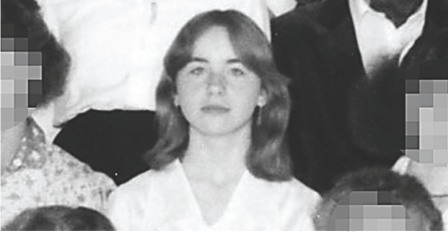
Elisabeth Fritzl who now lives under an assumed name in an Austrian village known as ‘Village X’
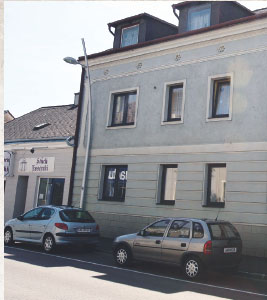
40 Ybbsstrasse, outwardly a normal house

A police van parked outside the back of the Fritzls’ dwelling
In May 1993, 9-month-old Lisa became the first of the grandchildren who would be cared for by Rosemarie. When Monika appeared in the following year, the press took note. ‘What kind of mother would do such a thing?’ asked one newspaper. After having raised seven of her own children, the neighbours took pity on Rosemarie. However, the senior citizen made no complaints and she proved to be devoted to her grandchildren. All three did well at school and they seemed happy and healthy, despite their incestuous background. Even the unfriendly Fritzl received a certain amount of respect and admiration for helping to raise three young children during the years in which one might rightly expect to take things easy.
For the children in the bunker, life could not have been more different. Kerstin, Stefan and Felix knew they had siblings living in the house above their heads. Indeed, Kerstin and Stefan could remember the babies being taken away.
To add insult to injury, Josef would bring videos that showed Lisa, Monika and Alexander enjoying a lifestyle that was vastly superior to their own.
Despite her suffering, Elisabeth did her best to provide Kerstin, Stefan and Felix with some semblance of a normal upbringing. She gave them regular lessons, in which they learned reading, writing and mathematics. All of the children, whether they were raised in the bunker by Elisabeth or upstairs by Rosemarie, ended up being intelligent, articulate and polite.
Bunker mentality
Fritzl has never explained why he took Lisa, Monika and Alexander upstairs, while keeping their siblings captive below. One possible explanation might have been lack of space. With a total area of around 35 m2 (380 ft2) the bunker was becoming increasingly cramped, particularly when the children grew bigger.
After the birth of Monika in 1993, Fritzl alleviated the problem somewhat by expanding the size of the bunker to 55 m2 (600 ft2).
On 27 April 2008, nine days after Fritzl had telephoned for an ambulance, a number of police officers arrived at the house of Josef and Rosemarie Fritzl. Josef Fritzl was taken into custody while Rosemarie and her grandchildren were taken to a psychiatric hospital, where they were reunited with Elisabeth.
On the day after his arrest, Fritzl confessed to keeping Elisabeth captive and fathering her children. He defended his actions by claiming that the sex had been consensual and that Elisabeth’s incarceration had been necessary in order to rescue her from ‘persons of questionable moral standards’. Elisabeth had refused to obey his rules ever since she had entered puberty, he said.
As Fritzl awaited trial for his crimes he became more and more enraged by the media coverage. Eventually, the electrical engineer released a letter through his lawyer in which he spoke of the kindness he had always shown his family. Fritzl pointed out that he could have killed them, but chose not to.
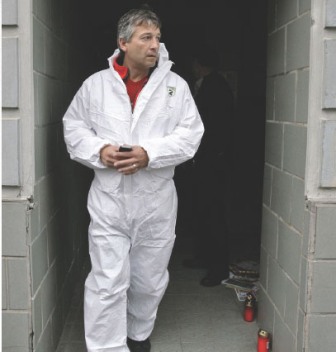
A forensic officer emerges from the Fritzls’ front door
On 16 March 2009, the first day of his trial, Fritzl was charged with rape, incest, kidnapping, false imprisonment, slavery, grievous assault and the murder of baby Michael. He pleaded guilty to all of the charges with the exception of grievous assault and murder.
In keeping with the agreement she struck with the police on the day she finally emerged from the bunker, Elisabeth did not appear in court. Instead, the 42-year-old woman’s testimony was presented in the form of an 11-hour video recording. The prosecution later revealed that Elisabeth had been watching the proceedings from the visitors’ gallery. She had been heavily disguised to avoid being recognized.
The news caused Fritzl to break down. He changed his plea to guilty on all charges, thereby ending the court case. That same day he was sentenced to life imprisonment, with no possibility of parole for 15 years.
Danger signs: Indecently exposed himself as a young man
Pattern of crime: With the construction of the bunker, his need to control others was written in concrete
Breakthrough: When 19-year-old daughter Kerstin had to be taken to hospital, Fritzl’s world began to unravel
Plea for the defence: ‘I was born to rape. I could have behaved a lot worse than locking up my daughter’
Sentence: Life imprisonment (without the possibility of parole for 15 years)